Franck Monnier
« Quelques rĂ©flexions sur le terme « jnb »  ,
,  »
»
ENiM 5, 2012, p. 257-283.
 Cet article propose de nouveaux éléments de réflexion concernant le substantif jnb, ainsi qu’une discussion sur l’origine de l’idéogramme qui lui est associé. Les chercheurs ne s’accordent pas encore tous sur sa signification, et sa présence dans un texte est souvent interprétée comme la volonté d’évoquer une fortification ou un mur d’enceinte. L’analyse d’une sélection de documents permet d’affiner la compréhension de ce terme architectural.
Cet article propose de nouveaux éléments de réflexion concernant le substantif jnb, ainsi qu’une discussion sur l’origine de l’idéogramme qui lui est associé. Les chercheurs ne s’accordent pas encore tous sur sa signification, et sa présence dans un texte est souvent interprétée comme la volonté d’évoquer une fortification ou un mur d’enceinte. L’analyse d’une sélection de documents permet d’affiner la compréhension de ce terme architectural.
 This article proposes new interpretations of the noun jnb, as well as a discussion of the origin of the ideogram which is associated with it. Scholars still do not agree on the meaning of the term, and its presence in a text is often understood as referring to a fortification or an outer wall. An analysis of a selection of documents allows the meaning of this architectural term to be refined.
This article proposes new interpretations of the noun jnb, as well as a discussion of the origin of the ideogram which is associated with it. Scholars still do not agree on the meaning of the term, and its presence in a text is often understood as referring to a fortification or an outer wall. An analysis of a selection of documents allows the meaning of this architectural term to be refined.
 Consulter cet article (51008) -
Consulter cet article (51008) -  Télécharger cet article au format pdf (28646)
Télécharger cet article au format pdf (28646)
« La houe et la forteresse... Finalement, acte de fondation ou de destruction ? »
ENiM 6, 2013, p. 243-256.
 La combinaison des deux signes « houe » et « forteresse » rencontrée sur quelques rares documents, et en particulier sur la palette « du tribut libyen », est généralement entendue comme représentant un acte de destruction. Toutefois, un certain nombre de chercheurs se sont attachés depuis quelques décennies à mettre en défaut cette interprétation. Selon eux, il ne fait aucun doute qu’il s’agisse d’un acte de fondation. Cet article analyse les arguments avancés par ces derniers et tente de faire le point sur la question.
La combinaison des deux signes « houe » et « forteresse » rencontrée sur quelques rares documents, et en particulier sur la palette « du tribut libyen », est généralement entendue comme représentant un acte de destruction. Toutefois, un certain nombre de chercheurs se sont attachés depuis quelques décennies à mettre en défaut cette interprétation. Selon eux, il ne fait aucun doute qu’il s’agisse d’un acte de fondation. Cet article analyse les arguments avancés par ces derniers et tente de faire le point sur la question.
 The association of the two signs hoe and fortress found in a few documents, and in particular on the Libyan palette, is generally understood as an act of destruction. However, in the last decades some scholars endeavored to show the wrong of this interpretation. According to them, we deal undoubtedly with a foundation ceremony. This article analyzes the advanced arguments and tries to review the question.
The association of the two signs hoe and fortress found in a few documents, and in particular on the Libyan palette, is generally understood as an act of destruction. However, in the last decades some scholars endeavored to show the wrong of this interpretation. According to them, we deal undoubtedly with a foundation ceremony. This article analyzes the advanced arguments and tries to review the question.
 Consulter cet article (52810) -
Consulter cet article (52810) -  Télécharger cet article au format pdf (28634)
Télécharger cet article au format pdf (28634)
« Une iconographie Ă©gyptienne de l’architecture dĂ©fensive »
ENiM 7, 2014, p. 173-219.
 Cet article propose une compilation de toutes les représentations égyptiennes relatives à l’architecture défensive, de la période protohistorique à la Basse Époque. L’inventaire ainsi dressé permet en outre quelques remarques et réflexions sur certains éléments de cette iconographie, sur la manière d’interpréter les illustrations de forts, mais aussi sur les limites que nous imposent les codes artistiques égyptiens.
Cet article propose une compilation de toutes les représentations égyptiennes relatives à l’architecture défensive, de la période protohistorique à la Basse Époque. L’inventaire ainsi dressé permet en outre quelques remarques et réflexions sur certains éléments de cette iconographie, sur la manière d’interpréter les illustrations de forts, mais aussi sur les limites que nous imposent les codes artistiques égyptiens.
 This article proposes a compilation of all the Egyptian representations concerning the defensive architecture, from the Protohistoric period to the Late Period. This inventory allows some remarks and reflections on some elements of this iconography, on interpretation of the illustrations of forts, but also on the limits imposed by the Egyptian artistic codes.
This article proposes a compilation of all the Egyptian representations concerning the defensive architecture, from the Protohistoric period to the Late Period. This inventory allows some remarks and reflections on some elements of this iconography, on interpretation of the illustrations of forts, but also on the limits imposed by the Egyptian artistic codes.
 Consulter cet article (59896) -
Consulter cet article (59896) -  Télécharger cet article au format pdf (29861)
Télécharger cet article au format pdf (29861)
« The Construction Phases of the Bent Pyramid at Dahshur. A Reassessment »
ENiM 9, 2016, p. 15-36.
 Les particularités architecturales de la pyramide rhomboïdale de Snéfrou à Dahchour-Sud inspirent deux courants d’interprétation. Le premier consiste à y voir l’expression symbolique délibérée d’une dualité et, le second, des modifications en raison de problèmes structuraux survenus au cours du chantier. Cet article fait le point sur l’état de l’archéologie en y apportant des observations inédites et complémentaires. Certains détails jusqu’alors passés inaperçus, ainsi que la pathologie de l’édifice, amènent à confirmer que les bâtisseurs ont apporté plusieurs changements à leur projet, mais aussi à en saisir les raisons. Une révision complète de l’histoire du monument est ainsi proposée en guise de conclusion.
Les particularités architecturales de la pyramide rhomboïdale de Snéfrou à Dahchour-Sud inspirent deux courants d’interprétation. Le premier consiste à y voir l’expression symbolique délibérée d’une dualité et, le second, des modifications en raison de problèmes structuraux survenus au cours du chantier. Cet article fait le point sur l’état de l’archéologie en y apportant des observations inédites et complémentaires. Certains détails jusqu’alors passés inaperçus, ainsi que la pathologie de l’édifice, amènent à confirmer que les bâtisseurs ont apporté plusieurs changements à leur projet, mais aussi à en saisir les raisons. Une révision complète de l’histoire du monument est ainsi proposée en guise de conclusion.
 The architectural peculiarities of the Bent pyramid built by Snefru at South Dahshur are the subject of two currents of interpretation. The first one consists of seeing the symbolic and deliberate expression of a duality in the design, and the second one, modifications due to structural problems that occurred during the construction work. This article reviews the archaeological situation by bringing unpublished and additional observations into the discussion. Some details that have been unnoticed by commentators so far, as well as a structural pathology of the building, lead to confirmation that the builders changed their project several times, but also reveal the reasons for these changes. A complete revision of the history of the monument is then suggested as a conclusion.
The architectural peculiarities of the Bent pyramid built by Snefru at South Dahshur are the subject of two currents of interpretation. The first one consists of seeing the symbolic and deliberate expression of a duality in the design, and the second one, modifications due to structural problems that occurred during the construction work. This article reviews the archaeological situation by bringing unpublished and additional observations into the discussion. Some details that have been unnoticed by commentators so far, as well as a structural pathology of the building, lead to confirmation that the builders changed their project several times, but also reveal the reasons for these changes. A complete revision of the history of the monument is then suggested as a conclusion.
 Consulter cet article (59288) -
Consulter cet article (59288) -  Télécharger cet article au format pdf (28832)
Télécharger cet article au format pdf (28832)
« Les pyramides dans les problèmes mathĂ©matiques Ă©gyptiens »
ENiM 12, 2019, p. 233-246.
 Le papyrus Rhind place les pyramides au centre de quelques problèmes en lien avec des calculs de seqed et de hauteur. Deux autres énoncés, les problèmes pRhind no 60 et pMoscou no 14, ont été maintes fois mis en parallèle avec ces derniers et commentés en raison des difficultés d’interprétation qu’ils suscitent. La terminologie employée, le contexte des exercices, mais aussi l’état de l’archéologie peuvent permettre d’identifier les constructions décrites. L’architecture autorise également quelques comparaisons significatives qui amènent à nous interroger sur l’une des sources d’inspiration des papyri mathématiques du Moyen Empire.
Le papyrus Rhind place les pyramides au centre de quelques problèmes en lien avec des calculs de seqed et de hauteur. Deux autres énoncés, les problèmes pRhind no 60 et pMoscou no 14, ont été maintes fois mis en parallèle avec ces derniers et commentés en raison des difficultés d’interprétation qu’ils suscitent. La terminologie employée, le contexte des exercices, mais aussi l’état de l’archéologie peuvent permettre d’identifier les constructions décrites. L’architecture autorise également quelques comparaisons significatives qui amènent à nous interroger sur l’une des sources d’inspiration des papyri mathématiques du Moyen Empire.
 The Rhind mathematical papyrus incorporates a small group of problems focusing on pyramids and demonstrating how to calculate their seked side slopes and heights. Two other problems, pRhind 60 and pMoscow 14, have been discussed extensively in conjunction with the former problems due to the interpretive challenges they pose. The terminology they use and the context of the exercises mean that archaeology and philology can potentially provide information aiding understanding of the buildings described. Architecture uncovered in excavations may represent structures that inspired the problems outlined in the Middle Kingdom mathematical papyri, and the different classes of evidence are compared here.
The Rhind mathematical papyrus incorporates a small group of problems focusing on pyramids and demonstrating how to calculate their seked side slopes and heights. Two other problems, pRhind 60 and pMoscow 14, have been discussed extensively in conjunction with the former problems due to the interpretive challenges they pose. The terminology they use and the context of the exercises mean that archaeology and philology can potentially provide information aiding understanding of the buildings described. Architecture uncovered in excavations may represent structures that inspired the problems outlined in the Middle Kingdom mathematical papyri, and the different classes of evidence are compared here.
 Consulter cet article (54834) -
Consulter cet article (54834) -  Télécharger cet article au format pdf (27280)
Télécharger cet article au format pdf (27280)
« DonnĂ©es nouvelles sur les appareils de maçonnerie des grandes pyramides »
ENiM 13, 2020, p. 237-261.
 Une campagne de relevés photogrammétriques effectuée en 2018 a permis de numériser les grandes pyramides construites durant les IIIe et IVe dynasties. Sans prétendre à l’exhaustivité, celle-ci s’était donné comme objectif de promouvoir cette technologie dans l’étude des grands monuments égyptiens. L’analyse des données a permis d’effectuer des observations et des mesures précises sur des parties extérieures jusque-là inaccessibles. Cet article rassemble les données les plus significatives recueillies sur les appareils de maçonnerie des pyramides de Snéfrou situées à Meïdoum et Dahchour, et de la pyramide de Khéphren à Giza.
Une campagne de relevés photogrammétriques effectuée en 2018 a permis de numériser les grandes pyramides construites durant les IIIe et IVe dynasties. Sans prétendre à l’exhaustivité, celle-ci s’était donné comme objectif de promouvoir cette technologie dans l’étude des grands monuments égyptiens. L’analyse des données a permis d’effectuer des observations et des mesures précises sur des parties extérieures jusque-là inaccessibles. Cet article rassemble les données les plus significatives recueillies sur les appareils de maçonnerie des pyramides de Snéfrou situées à Meïdoum et Dahchour, et de la pyramide de Khéphren à Giza.
 A new photogrammetric survey was carried out in 2018 to digitize the visible surfaces of the great 3rd and 4th dynasty pyramids of Egypt. While certainly not exhaustive, the intention of the campaign was to demonstrate and promote this new 3D technology for the study of ancient Egyptian monuments. The data collected this way facilitated observation and the accurate measurement of previously inaccessible external parts of the architecture. This article brings together the most significant new data collected during the survey and presents new information and analysis regarding the stones of the Pyramids of Snefru at Meidum and Dahshur, and the pyramid of Khafre at Giza.
A new photogrammetric survey was carried out in 2018 to digitize the visible surfaces of the great 3rd and 4th dynasty pyramids of Egypt. While certainly not exhaustive, the intention of the campaign was to demonstrate and promote this new 3D technology for the study of ancient Egyptian monuments. The data collected this way facilitated observation and the accurate measurement of previously inaccessible external parts of the architecture. This article brings together the most significant new data collected during the survey and presents new information and analysis regarding the stones of the Pyramids of Snefru at Meidum and Dahshur, and the pyramid of Khafre at Giza.
 Consulter cet article (56237) -
Consulter cet article (56237) -  Télécharger cet article au format pdf (24311)
Télécharger cet article au format pdf (24311)
« Les techniques de siège dĂ©crites dans la documentation pharaonique »
ENiM 15, 2022, p. 51-73.
 Avec cet article, l’auteur répertorie et analyse les témoignages relatifs aux techniques de siège mises en œuvre lors des assauts lancés sur des forteresses ou des cités fortifiées durant la période pharaonique. Ce travail conduit à réévaluer certains points particulièrement débattus et à reconstituer quelques-uns des dispositifs originaux employés par les armées égyptiennes et koushites.
Avec cet article, l’auteur répertorie et analyse les témoignages relatifs aux techniques de siège mises en œuvre lors des assauts lancés sur des forteresses ou des cités fortifiées durant la période pharaonique. Ce travail conduit à réévaluer certains points particulièrement débattus et à reconstituer quelques-uns des dispositifs originaux employés par les armées égyptiennes et koushites.
 With this article, the author lists and analyses documentation relating to siege techniques which were used during assaults on fortresses or fortified cities during the Pharaonic period. This work leads to reassess some particularly debated points and to reconstructe some of the original devices used by the Egyptian and Kushite armies.
With this article, the author lists and analyses documentation relating to siege techniques which were used during assaults on fortresses or fortified cities during the Pharaonic period. This work leads to reassess some particularly debated points and to reconstructe some of the original devices used by the Egyptian and Kushite armies.
 Consulter cet article (45539) -
Consulter cet article (45539) -  Télécharger cet article au format pdf (19863)
Télécharger cet article au format pdf (19863)
« áą®smt ou swnw. D’autres cas possibles de couronne en forme de bastion ou de tour crĂ©nelĂ©e »
ENiM 18, 2025, p. 37-53.
 Cet article fait d’abord le point sur la tour-swnw et le bastion-?smt, des ouvrages défensifs que des textes de nature mythologique mentionnent à plusieurs reprises, pour ensuite se tourner vers des représentations atypiques du dieu Onouris-Chou. Après analyse, ces dernières pourraient venir augmenter l’iconographie égyptienne relative aux tours et aux bastions.
Cet article fait d’abord le point sur la tour-swnw et le bastion-?smt, des ouvrages défensifs que des textes de nature mythologique mentionnent à plusieurs reprises, pour ensuite se tourner vers des représentations atypiques du dieu Onouris-Chou. Après analyse, ces dernières pourraient venir augmenter l’iconographie égyptienne relative aux tours et aux bastions.
 This article begins with an overview of the swnw-tower and ?smt-bastion, these defensive structures that are mentioned several times in mythological texts, before turning to atypical representations of the god Onuris-Shu. After analysing them, the latter could be added to the known towers and bastions in Egyptian iconography.
This article begins with an overview of the swnw-tower and ?smt-bastion, these defensive structures that are mentioned several times in mythological texts, before turning to atypical representations of the god Onuris-Shu. After analysing them, the latter could be added to the known towers and bastions in Egyptian iconography.
 Consulter cet article (19106) -
Consulter cet article (19106) -  Télécharger cet article au format pdf (7470)
Télécharger cet article au format pdf (7470)
ENiM 18 - 2025
8 article(s) - 8 octobre 2025.
ENiM 1 à 18 (2008-2025) : 227 articles
5 291 021 téléchargements
10 554 921 consulations.
Index des auteurs

Mots clés

Derniers articles : 
CENiM - Mise en ligne des volumes Ă©puisĂ©s : 
 Anne-Sophie von BOMHARD DĂ©cans Ă©gyptiens, CENiM 23, Montpellier, 2020 — (2020)
Anne-Sophie von BOMHARD DĂ©cans Ă©gyptiens, CENiM 23, Montpellier, 2020 — (2020) 
 Jean-Claude Grenier L'Osiris ANTINOOS, CENiM 1, Montpellier, 2008 — (26 dĂ©cembre 2008)
Jean-Claude Grenier L'Osiris ANTINOOS, CENiM 1, Montpellier, 2008 — (26 dĂ©cembre 2008) 
TDENiM - Mise en ligne des volumes Ă©puisĂ©s : 
 Twitter
Twitter 4205631 visites - 2607 visite(s) aujourd’hui - 73 connecté(s)
© ENiM - Une revue d’égyptologie sur internet
Équipe Égypte Nilotique et Méditerranéenne - UMR 5140 - « Archéologie des Sociétés Méditerranéennes » (Cnrs) - Université Paul Valéry - Montpellier III
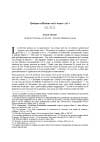
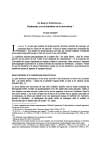

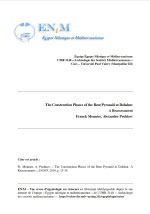
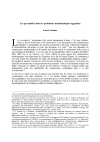
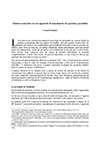
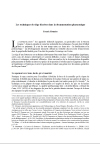
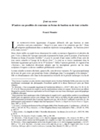





















 Contact
Contact
 Abonnez-vous !
Abonnez-vous ! Équipe Égypte Nilotique et Méditerranéenne
Équipe Égypte Nilotique et Méditerranéenne UMR 5140 « Archéologie des Sociétés Méditerranéennes » (Cnrs)
UMR 5140 « Archéologie des Sociétés Méditerranéennes » (Cnrs) Université Paul Valéry - Montpellier III
Université Paul Valéry - Montpellier III